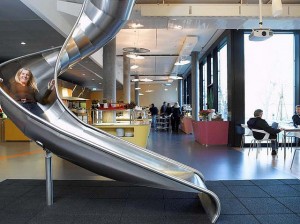Today’s workplace looks pretty different from 30 years ago - or so I hear; for this millennial, the modern office is the only one I’ve ever known. Some say it’s better today, others will speak warmly of the ‘good old days.’ And while I’m a big fan of the modern workplace, the truth is that every step forward comes with its own set of challenges.
Today I’d like to address those challenges. What’s eating away at the foundation of workplace culture across the nation? I would argue that the majority of conflict boils down to issues in these three areas. Managers, take note.
Generational differences
Of course there have always been young and old working for the same company, but in recent times, it seems employees of the younger generation have more power as decision makers. For those of you unfamiliar with generational theory, there are clear divisions in behavior between members of different cohorts. These divisions play a strong role in daily workplace exchanges. For example, TLNT recently covered a LinkedIn study on employee friendships at work. You can read the article on your own for the details, but the overwhelming trend is that millennials (ages 18-24) are vastly more friend-focused than the baby boomers (ages 55-65). Millennials are far more likely to text a manager outside of work hours and to share salary and family issues with coworkers. Imagine the implications! Armed with knowledge like this, it’s easy to understand why a boomer might view a certain intern as unprofessional or why a millennial might sense a communication gap with her boss.
I am a firm believer in learning about and appreciating the perspectives that members from each age group can bring to the table. And remember that conflict in this area can be constructive, as long as everyone involved approaches these differences with a willingness to learn.
Increased female representation
Women across the nation are securing high-power jobs in every industry. This is, first of all, awesome. But it certainly comes with a host of new challenges to address. For example, maternity leave is a common policy, but with many households consisting of two working adults, many men report that they value paid paternity leave as well (a whopping 93% of millennials, according to the Boston College Center for Work and Family). And what about flextime for working parents? Sexism, harassment, and plain old male-female miscommunication – these are the issues that must be given due diligence to build an open and effective workplace.
Pro tip: Companies looking to improve communication between staff, regardless of gender, should look into tools such as the Myers-Briggs personality test. Professional coaching is also a great resource when an individual needs to improve their soft skills.
Digital tools
First, the big topic – telecommuting. Technology has made working from home a viable option for many people, and businesses must decide if it is a sustainable solution for their workplace. And inside the office – how are technological developments affecting day-to-day life at work? Which gadgets are appropriate for use while on the clock? Is social media allowed? Is tech improving or hurting communication?
For medium- to large-sized businesses, email is relied upon as a standard in keeping the office operating normally. But sometimes, it can be counter-productive. It can keep someone rooted in their office when they could be actually speaking to the intended recipient. It can create a communication backup that takes valuable hours to sort through. Don’t get me wrong, I love email. I love instant messaging. I love text, social media, and Skype. But take the time sort through what really would be best over email and what can be discussed face-to-face. If you’re finding that engagement or productivity is indeed suffering due to email, you might want to give ‘National No Email Day’ a try. It’s a relatively disorganized movement (it seems no one can decide when the day actually is), but it has a simple rule: Log out of your email for one workday. I can hear you screaming in horror, but it’s something to think about.





